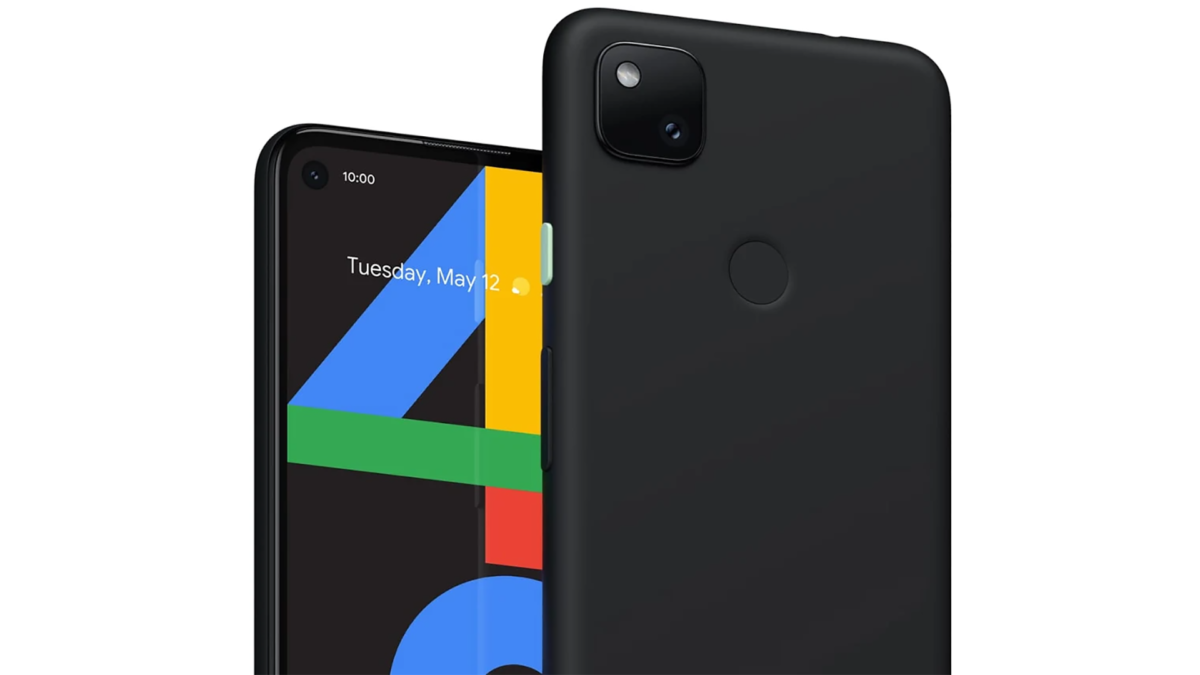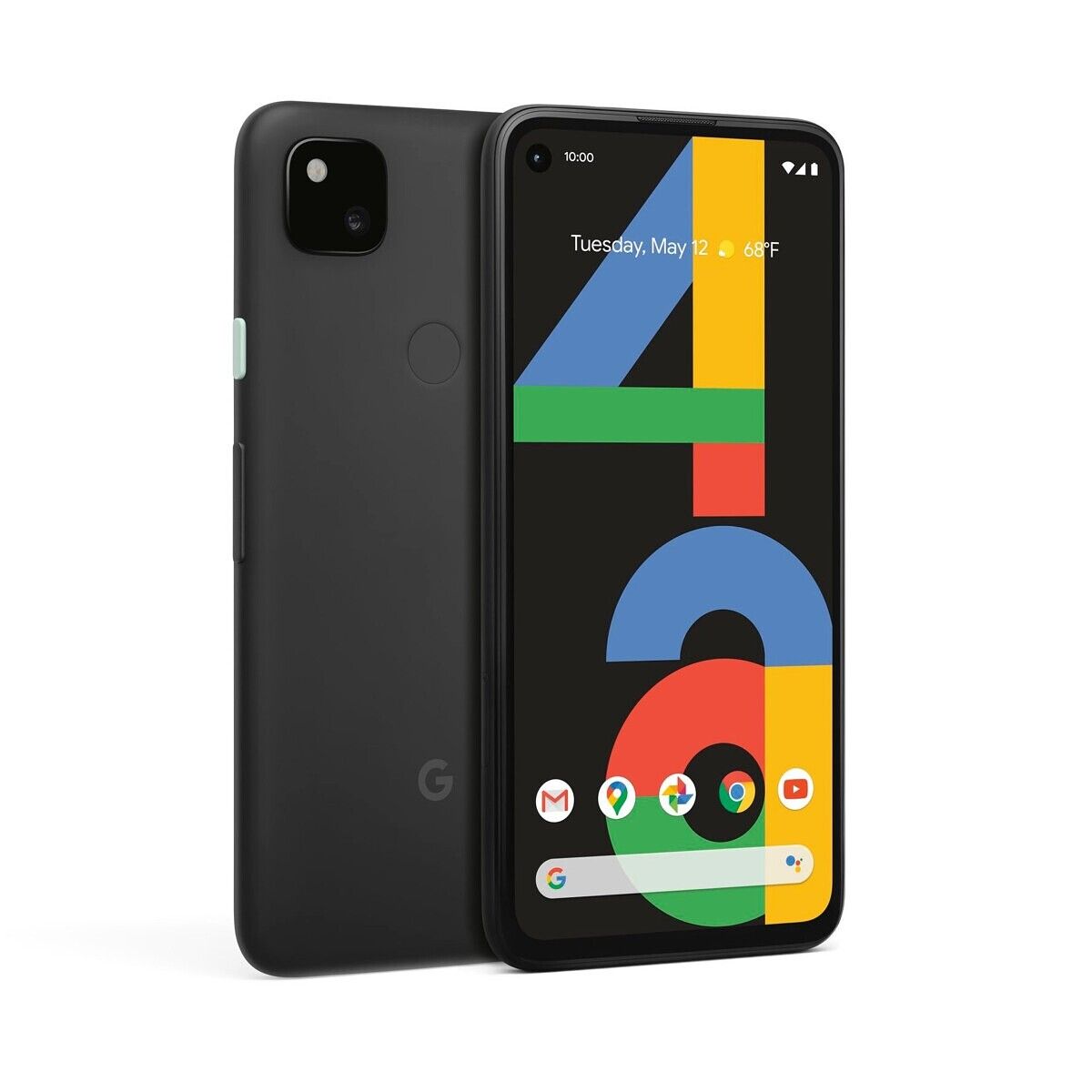Following months of delay due to the COVID-19 pandemic, Google has finally unveiled its 2020 mid-range Pixel smartphone, the Google Pixel 4a. We’ve been anticipating the launch of this device since it first leaked all the way back in December, and Google is finally ready to show off the device that’ll compete with the Apple iPhone SE and Samsung Galaxy A51 in the U.S. Here’s everything you need to know about the Google Pixel 4a and its specifications, features, pricing, and availability.

Google Pixel 4a Forums
Google Pixel 4a Specifications
| Specification |
Google Pixel 4a |
| Dimensions & Weight |
|
| Display |
- 5.81″ OLED display at 2340×1080 resolution
- 19.5:9 aspect ratio
- single hole-punch cutout
- 60Hz refresh rate
- Always on Display
|
| CPU & GPU |
Qualcomm Snapdragon 730
- 2 x ARM Cortex-A76 @ 2.2GHz
- 6 x ARM Cortex-A55 @ 1.8GHz
Adreno 618
Fabricated on Samsung’s 8nm LPP process
|
| RAM & Storage |
6GB LPDDR4X + 128GB UFS 2.1 |
| Battery & Charging |
- 3,140mAh
- 18W USB Type-C Power Delivery
|
| Security |
- Physical rear-mounted fingerprint scanner
- Titan M hardware security module
|
| Rear Camera |
Images: 12.2MP Sony IMX363, f/1.7 aperture lens, 1.4µm pixels, 77° field-of-view, Dual Pixel Phase Detection, OIS, EIS
Videos: Up to 4K@30fps
Slow-motion: Up to 1080p@120fps
Dual LED flash
|
| Front Camera |
8MP Sony IMX355, f/2.0 aperture lens, 1.12µm pixels, 84° field-of-view, EIS, fixed focus |
| Ports |
- USB 3.1 Gen 1 Type-C port
- 3.5mm headphone jack, 2 microphones
- Single nano-SIM card slot (+ eSIM)
|
| Connectivity |
Qualcomm Snapdragon X15 LTE modem
- Up to 800Mbps downloads
- Up to 150Mbps uploads
NFC, GPS, GLONASS, Galileo, QZSS, WiFi 2.4GHz + 5GHz 802.11a/b/g/n/ac 2×2 MIMO, Bluetooth 5.1
|
| Other Features |
Now Playing, New Google Assistant, Live Caption, Google Recorder app, Personal Safety app
Camera: Live HDR+, dual exposure controls, Night Sight with astrophotography, social share, Portrait Mode, Super Res Zoom
|
| Android Version |
- Android 10
- 3 years of Android OS upgrades
- 3 years of monthly Android security patch updates
|
Features
Design
Google’s Pixel 4a has a polycarbonate unibody, which is expected for a mid-range phone at this price. The rear camera and dual-LED flash are contained within a square camera bump that slightly bulges out from the rear, very reminiscent of the Pixel 4. The 4a has a physical fingerprint scanner on the back and a mint-colored power button for the black color model. There’s an earpiece speaker grille on the top bezel and a 3.5mm headphone jack on the top of the frame. At the bottom, you’ll find the USB Type-C port, a single bottom-firing speaker, and a grille for a microphone.

Display
The Pixel 4a is Google’s first Pixel device with a hole-punch display cutout. This cutout is located at the top-left and houses the single front-facing camera. Google made a bunch of wallpapers to go along with the hole-punch display, and you can check them out here.
The Pixel 4a’s display is flat but has rounded corners, and the bezels are much smaller than on the Pixel 3a and 3a XL. The display measures 5.81 inches diagonally and is an OLED panel at FHD+ (2340×1080) resolution at a 19.5:9 aspect ratio. The refresh rate is a standard 60Hz rather than the 90Hz on the Pixel 4 series.
Camera
Google added 2 cameras to the Pixel 4a: one on the front and one on the back. The single camera on the rear is comprised of a 12.2MP Sony IMX363 image sensor with an f/1.7 aperture lens, 1.4µm pixel size, 77° field-of-view, Dual Pixel Phase Detection, OIS, and EIS support. The front-facing camera, embedded underneath the hole-punch cutout at the top left of the display, is comprised of an 8MP Sony IMX355 image sensor with an f/2.0 aperture fixed focus lens, 1.12µm pixel size, 84° field-of-view, and EIS support. For standard video capture, the Pixel 4a is capable of 4K resolution at 30fps from the rear and 1080p resolution at 30fps from the front. For slow-motion videos, the device is capable of 1080p resolution at 120fps.

While the Google Pixel 4a may not have the most impressive camera hardware at this price point, it should more than make up for the hardware with the excellent Google Camera software. Google has brought many of the best Google Camera features to the Pixel 4a, including Live HDR+, dual exposure controls, Night Sight with astrophotography, Social Share, Portrait Mode, and Super Res Zoom. Here’s a brief summary of each feature:
- Live HDR+: With this feature, HDR is applied to the viewfinder so the image you see before taking the photo should match the image you see after pressing the shutter button. What you see is what you get.
- Dual exposure controls: Two sliders let you adjust the overall brightness of the scene and shadows independently.
- Night Sight with astrophotography: Take impressive low-light photos with this handheld long-exposure mode, and if you have a tripod, you can take even longer exposures for beautiful photos of the starry sky.
- Social Share: Quickly share your photos with your favorite social media and messaging apps straight from the Google Camera app.
- Portrait Mode: Apply a bokeh effect to photos of people and pets
- Super Res Zoom: Merges many frames directly onto a higher resolution photo, resulting in higher quality digital zoom.
While last year’s Pixel 3a also had two cameras with the same megapixel counts, the Pixel 4a improves upon it with the addition of features like Super Res Zoom, Live HDR+, dual exposure controls, and faster image processing thanks to the superior ISP. Here are some camera samples showing off what the Pixel 4a is capable of.
Performance
Powering the Google Pixel 4a is the Qualcomm Snapdragon 730 system-on-chip. The Snapdragon 730 features an octa-core CPU in a 2+6 cluster configuration; 2 ARM Cortex-A76 CPU cores clocked at up to 2.2GHz for high-performance are joined by 6 ARM Cortex-A55 CPU cores clocked at up to 1.8GHz for efficiency. The GPU is Qualcomm’s Adreno 618. This chip is fabricated on Samsung’s 8nm LPP process. Google paired the Snapdragon 730 with 6GB of LPDDR4X RAM and 128GB of UFS 2.1 storage.
Overall, these are big upgrades from last year’s Pixel 3a, which had the 10nm Qualcomm Snapdragon 670 with 2 x ARM Cortex-A75 + 6 x ARM Cortex-A55 cores, the Adreno 615 GPU, 4GB of LPDDR4X RAM, and 64GB of eMMC 5.1 storage. An early performance review pitted the Pixel 4a against the Pixel 4, Pixel 3a, and Pixel 3 XL, in case you’re wondering how the new device compares.
Power
Google boasts “up to 24 hours” of battery life on the Pixel 4a with a “mix of talk, data, standby and use of other features, with always-on display off.” This is made possible with the 3,140mAh battery, the power-efficient Qualcomm Snapdragon 730, and the relatively small 5.81″ display. None of the components in the Google Pixel 4a are particularly power-hungry, so the 3,140mAh battery should be more than enough to get most people through the day.
To top up the battery, the Pixel 4a supports 18W USB Power Delivery from the USB Type-C port. The device does not support wireless charging, however.
Software
The Google Pixel 4a runs the cleanest build of Android you’ll find on any commercial device. It runs Android 10 out-of-the-box with many of Google’s software enhancements and apps on top. For example, it supports Google’s Now Playing feature for ambient song recognition, the new Google Assistant for faster on-device recognition, Live Caption that now works in phone calls, the Google Recorder app for transcribing lectures and interviews, the Personal Safety app to alert your friends and family of emergencies, an Always-on Display, and more. What’s missing is Google’s Active Edge feature, a feature that lets you squeeze the phone’s frame to invoke the Google Assistant or silence timers/alarms.
Google promises the Pixel 4a will get Pixel Feature Drops alongside the other Pixel devices. That means more new features will be added every couple of months. In addition, Google promises 3 years of Android OS upgrades for the Pixel 4a, so you’re guaranteed to get updates to Android 11, Android 12, and Android 13. You’ll also get 3 years of monthly Android security patch updates, too. Speaking of security, the Pixel 4a has Google’s Titan M, a discrete hardware security module that’ll eventually let you store your driver’s license on your phone and access it when there’s not enough battery left to boot up Android.
Google Pixel 4a Pricing & Availability
Currently, the Google Pixel 4a is available in only a single color: Just Black. However, Google is also selling its signature Fabric cases, which are machine-washable, soft-to-touch fabric cases made from over 70% recycled materials. The cases are available in Basically Black, Blue Confetti, and Static Grey.
The Google Pixel 4a goes on sale in the U.S. for $349. It’s available for pre-order on Amazon, Google Fi, the Google Store, and Best Buy with an arrival date of August 20th, 2020. It’s also available on through U.S. Cellular and Verizon in the U.S. Internationally, the Pixel 4a will be available in the UK, Ireland, Germany, Australia, Japan, and Canada. In India, the device will go on sale in October, though Google has not mentioned any particular date or pricing for that matter.
Google is offering 3 months of YouTube Premium, Google Play Pass, and Google One (100GB/month) for Pixel 4a purchases. These offers are only available for users who purchase and activate a Pixel 4a by April 30, 2020, at 2:30 AM EST. For more details on these offers, check out this page.
Google Pixel 4a Product Page ||| Google Pixel 4a Forums
The post Google’s mid-range Pixel 4a smartphone announced at a price of $349 appeared first on xda-developers.
from xda-developers https://ift.tt/3grrivb
via
IFTTT





